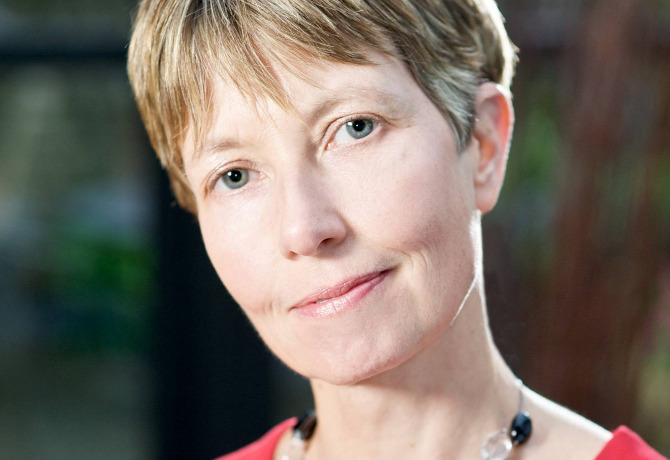M&M Global quizzed Unilever’s media boss Sarah Mansfield about how the owner of brands such as Axe, Knorr and Hellmann’s is changing its thinking around media.
Unilever is one of the biggest spenders on marketing and media in the world, investing up to $8bn each year on communicating its brands to consumers across the globe. What it says and does matters to the entire advertising and media industry.
With this in mind, we spoke to Sarah Mansfield (pictured below), the FMCG giant’s vice president for global media, Europe and Americas, to find out Unilever’s latest thinking on media, ad tech, emerging markets and agency relationships.
A ‘people centric’ approach
“In what is a very fragmented media world, and one where consumers are in charge of what content they consume, you need to ensure you have a very people-centric strategy,” says former Barclaycard marketer Mansfield.
It is becoming harder to develop “joined-up” brand experiences, she says, given the sheer number of touchpoints with consumers, increasing the need for tailored content on each platform.
Mixing global and local media
“It’s all about getting the right mix,” says Mansfield, a judge at this year’s M&M Global Awards. Unilever has international partnerships in place with the likes of Google, Facebook and Twitter, but a “two-fold” strategy is required to ensure it reaches the right audience.
“We give local markets enough leeway to amplify the content in the right way for that particular market, reflecting the cultural nuances”
“On the ground, a lot of our media partners are still very much local and specialists in their markets. You need really good communication strategies and frameworks, being clear on the role of each channel. But we give local markets enough leeway to amplify the content in the right way for that particular market, reflecting the cultural nuances,” she says.
Media-neutral planning
Unilever is changing its media strategy to reflect what Mansfield describes as an “omni-channel world”. It plans on a “media-neutral basis”, starting with the creative insight and target audience, and building up a strategy from that point.
“Digital platforms are important – increasingly so as consumers spend their time there – but that doesn’t mean that TV and print aren’t still a core part of our strategy,” she says.
“We start with the audience: what is it we want to be done – is it to drive awareness, engagement or loyalty – and what is the best way to reach that audience?”
Demanding more from agencies
Unilever has been one of the biggest contributors to this year’s co-called ‘Mediapalooza’, with over $20bn in media agency business up for grabs, so any advice for agencies from one of the firm’s marketers is worth its weight in gold.
Here is what Mansfield had to say: “We’ve always worked in partnership with our agencies, and that is the only way to get the best out of them, and for them to really understand what you are trying achieve as a business.
“We work in a very dynamic and volatile market, so we need the best brains possible to come up with the best strategies for this complex world. [Agencies must be] flexible, agile, and bringing us the best of what is new out there for us to plan and buy our media.”
Innovation through partnerships
The company’s recent partnership with VICE Media, and the launch of a new young female-focused video channel Broadly, created lots of headlines. The content channel promises to give Unilever the chance to push its Vaseline, Dove, Sure and Tresemme brands to “hundreds of millions” of millennials.
Mansfield said the project has become a template for how Unilever sees a “successful partnership”. She adds: “We are very open to new ideas and ways of working. It is a different way of working, recognising this is an audience that engages with content in a different way.
“We are really working with VICE to develop content which are both relevant for that audience and appropriate for our brand.”
Keeping ahead of the curve
Unilever was one of the first brand owners to implement structures to take advantage of the explosion of technology start-ups. Its Unilever Foundry programme has produced numerous innovation-led campaigns – take the recent Wall’s campaign featuring branded emojis, created in tandem with start-up Snaps.
“We pride ourselves on being ahead of the curve in beta-testing new ideas and innovations, to keep ahead of the market, and deliver our messages with impact,” says Mansfield.
Though Unilever does “set money aside” for innovation projects, there are “no strict guidelines” about when brands should or should not collaborate with start-ups. Instead, a more pragmatic philosophy rules the day: “If we see a great opportunity we will make it happen.”
Opportunity in programmatic
The rise of programmatic trading presents an “opportunity” for Unilever, and one it is still investigating, says Mansfield. In Brazil, for instance, the company’s Axe brand trialled a programmatic project (see below), delivering 100,000 permutations of a piece of content based on four audience segments and optimised over time.
“We invest in programmatic, we have our own training platform and we are doing a lot of experimenting in that space. It is more about delivering the right content, at the right moment, in the right space. Programmatic gives you a great opportunity to do that, making sure you are delivering tailored content to the right consumer,” she says.
Can she envisage a world in which all of Unilever’s media is bought programmatically, by an in-house team of specialists? “Blimey, I think we’re a long way off that! I haven’t got a crystal ball, but it isn’t going to happen tomorrow.”
AXE. Romeo Reboot Manuel | Trailer (english) from THE KUMITE on Vimeo.
Ad tech must deliver ‘great value’
As Mansfield points out, Unilever has been among the brands pressurising the ad tech industry to redefine its approach to viewability. It sums up the company’s approach to the wider ad tech question: if it delivers great value, in reach or engagement, then they are willing to listen, but only if the partner meets Unilever’s expectations in other areas.
“More and more in the digital space, we’re talking to partners around making sure we have complete transparency around how they are operating in the market,” she says. “We want to make sure we get what we pay for.”
“Partners have to ensure complete transparency around how they are operating in the market. We want to make sure we get what we pay for.”
“We’re not going to enter into a long-term partnership unless it is a proven channel for us, but if something works and we see an opportunity we will develop that further and maybe make it more formal. Media partners are always willing to ‘lean in’, and we can reward them with our loyalty.”
Exchanging learnings from mature and emerging markets
There are fewer differences between mature and emerging markets than one may suspect, argues Mansfield, who oversees Unilever’s media in markets from Guatemala to Germany. In fact, she says she enjoys the “juxtaposition” of working across markets of differing maturity.
“I think there’s a lot more synergies than people think, and there is quite a lot you can leverage from emerging markets into developed markets, as well as the other way around,” she says.
“In some ways there are fewer barrier to doing things in new markets, and at times they don’t take no for an answer, whereas there can be too many barriers elsewhere to getting things done,” she adds, pointing to the success of Axe’s programmatic initiative in Brazil (see above).
The future is about omni-connectivity
Media continues to evolve, influenced by ideas and innovations from regions around the world. Mansfield is interested to see the impact of Africa’s leap to mobile, skipping desktop technology, and the growth of mobile services.
Asked what she considers to be the most important global media trends, she answers: “Omni-connectivity, consumers being always on, and the opportunity of contextual content based on behaviour, time and location.
“We as an organisation are looking at things from a mobile-first perspective, in both developed and emerging markets. Mobile brings lots of opportunities.”









